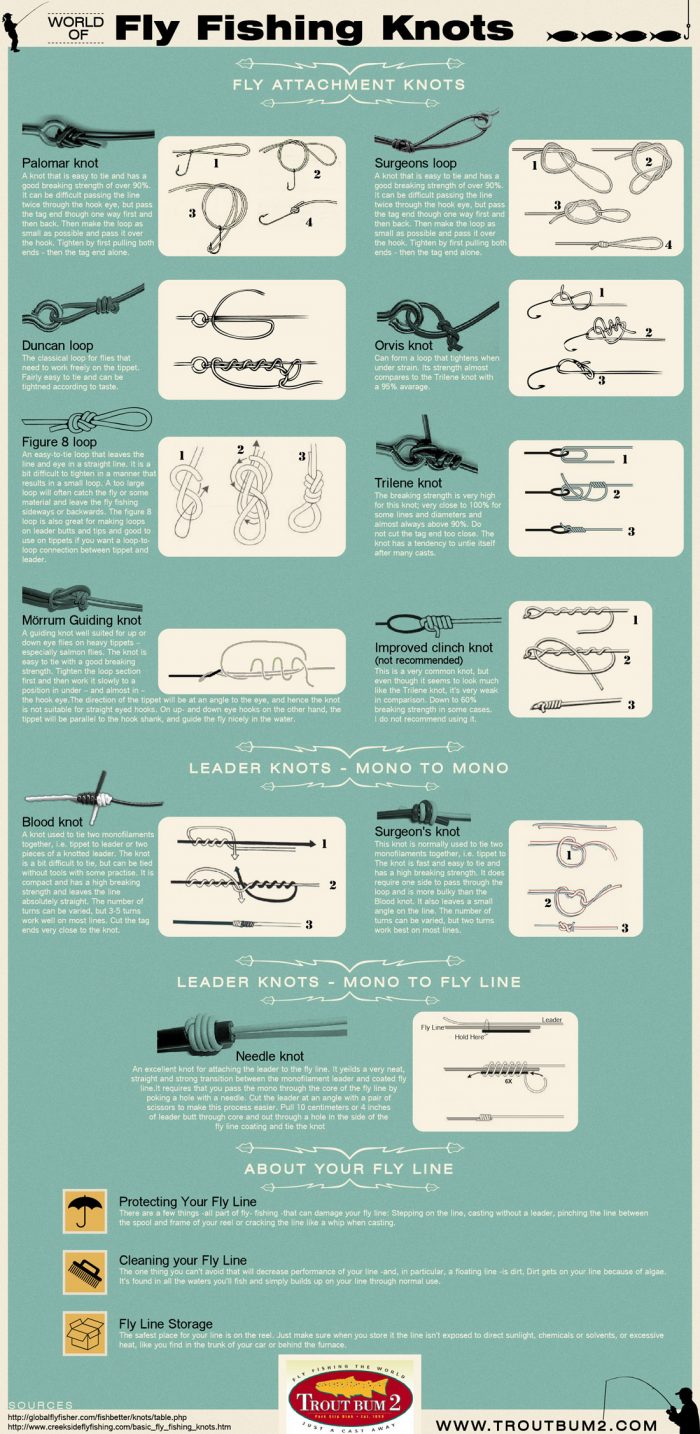
Fly fishing is one of the many ways that people can enjoy being in nature. It’s also a sport that requires some skill, like tying knots. If you’re not sure what kind of knot to use for your fly line or leaders, this guide will help!
The Palomar Knot
The Palomar Knot is a simple and effective knot that works well for both mono and fluorocarbon lines. It’s great for attaching flies to leaders, but can also be used to tie on hooks or attach dropper flies. The name comes from its inventor, Tom Morgan–a guide who liked to fish with small flies and wanted an easier way of attaching them than whipping them on with thread or cinching them down with alligator clips (which, by the way, are illegal in many states). The Palomar Knot is easy enough that even beginners can master it after just a few tries!
The Surgeons Loop
The Surgeons Loop is a knot that is used to connect two lines of the same diameter. It’s used in fly fishing, carp fishing, and other fishing methods. It’s easy to tie and untie, but not as strong as other knots.
Duncan Loop
The Duncan Loop is one of the most popular knots for tying a fly to your leader. It’s easy to learn and does not require any special tools. The advantage of this knot is that it doesn’t slip when you pull on it, so you can use it for everything from heavy nymphs to small dry flies. The disadvantages are that it can be difficult to untie once it’s been used extensively; also, if you don’t tie it tightly enough, there’s a chance that some material may come loose in between turns (this isn’t dangerous but will make your fly look sloppy).
Orvis Knot
The Orvis Knot is used to tie two lines together. It’s a good knot to use when tying two lines of different diameters and it’s easy to tie and untie, which makes it ideal for fishing in cold weather (since your hands will feel like they’re frozen).
Figure 8 Loop
The Figure 8 Loop is a very strong and reliable knot that can be used to tie on the tippet (the connecting line from your fly line) to your fly. This is one of the best knots for beginners because it’s so easy to learn and tie, but also has enough strength for catching fish in heavy cover or when you need something extra secure like when tying off multiple flies at once. The Figure 8 Loop is done by creating an “8” shape with two pieces of line and then passing them through each other before pulling tight at the end.
Trilene Knot
The Trilene Knot is a strong knot that can be used for leader to fly, leader to tippet, and leader to fly. The Trilene Knot is also good if you want to tie leaders of different diameters together.
Morrum Guiding Knot (AKA the Improved Clinch knot)
The Morrum Guiding Knot (AKA the Improved Clinch knot) is used to tie the fly to the leader. It’s easy to tie and untie, even after repeated uses. It holds well in mono, fluorocarbon and braided lines of various diameters. It can be used with leaders made of different materials (e.g., nylon monofilament versus polypropylene.)
Blood Knot
If you’re looking for a knot that will hold up in all kinds of conditions, the blood knot is your best bet. This double-surgeon’s looped knot has been used by fly fishermen since the 19th century and boasts an impressive strength-to-weight ratio. It’s also easy to tie–you just have to remember two simple steps: 1) wrap one line around its own tag end and 2) pass it through both loops of another line (like tying your shoes). The blood knot has many uses beyond fly fishing; it can be used as an emergency stopper when sewing or repairing clothing, as well as for attaching leaders or tippets together at different lengths so you don’t have one long leader with several shorter ones dangling off of it like Christmas lights on New Year’s Eve!
Surgeon’s Knot (AKA Double surgeons)
The Surgeon’s Knot is a great knot for joining two lines of equal size. It can also be used to join two lines of different sizes, or even materials. This knot is ideal when you need to connect your hook with leader material or another leader. The Surgeon’s Knot begins by passing one end through the eye of the hook, then wrapping it around itself and passing it back through the same hole (the first wrap will look like an overhand loop). Next, bring both ends together again under their previous wraps and pull tight so that each end passes through its own hole on opposite sides of your original overhand loop. Pull each tail firmly until they meet in front of where they began; then secure them together with half hitches around each other at least three times–six would be better!
Don’t feel like a pro fly fishing without mastering the art of tying knots! The first step to mastering your fly fishing skills is learning how to tie knots. This essential skill will help you catch more fish, as well as keep your line from tangling up. We hope that this article has helped you to understand the importance of tying knots and some of the different types available. There are many other kinds of knots out there, but these 11 are the most common and useful when it comes to fly fishing. If you want more information on other types then check out our blog post on how to tie every knot in existence!
